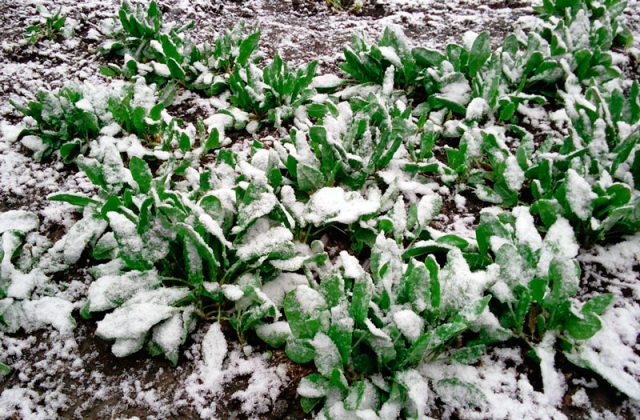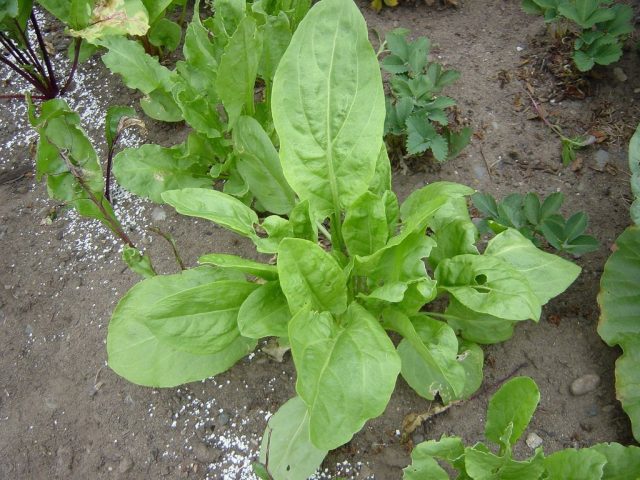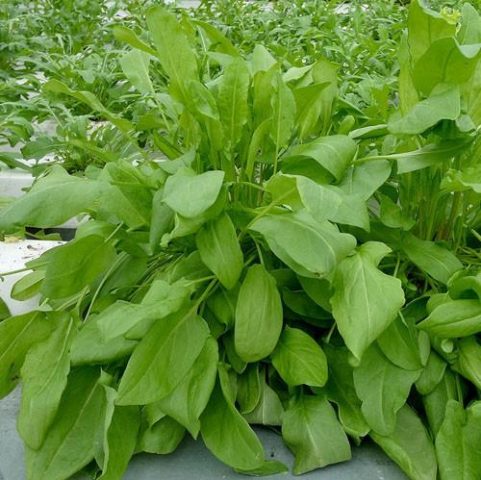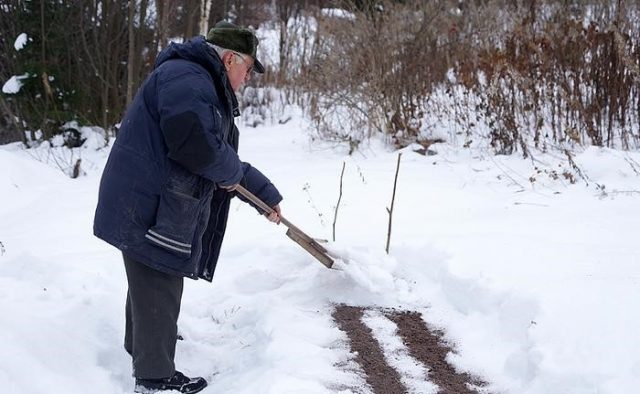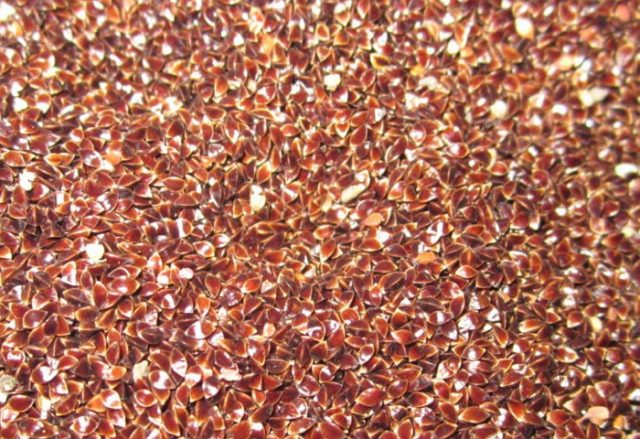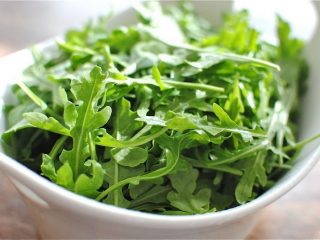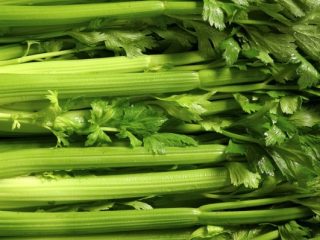Content
- 1 Is it possible to sow sorrel before winter?
- 2 When is it better to plant sorrel: autumn or spring
- 3 When can you sow sorrel in the fall?
- 4 How to plant sorrel before winter
- 5 Caring for sorrel in the fall and preparing for winter
- 6 Varieties of sorrel for winter
- 7 Grandmother's tips and secrets on how to plant sorrel before winter
- 8 Conclusion
Planting sorrel before winter allows you to free up time in the spring for other work. At the beginning of the year, gardeners have a lot to worry about, every second counts, so everything that can be done in the fall should not be put off.
Winter sowing has become very popular in Western Europe; it is carried out by large and small farms. For some reason, we have a lot of publications on this topic, but in practice, a gardener will try to plant something in the fall, get a negative experience, and give up on the topic. Meanwhile, failures are often caused by the wrong choice of sowing time or crop.
Is it possible to sow sorrel before winter?
Sorrel is a crop that can be sown in early spring, summer and late autumn. Winter planting has a number of advantages:
- seeds undergo stratification;
- sowing is carried out when the main garden work is completed;
- shoots appear early in spring, tender leaves can be immediately eaten, replenishing the lack of vitamins and minerals;
- Sorrel planted with seeds before winter is less likely to get sick and be affected by pests.
Every gardener has heard the last statement, but not everyone takes it seriously. Meanwhile:
- if sorrel is planted for the winter, it undergoes natural hardening at an early age and remains healthier compared to other representatives of the crop throughout its entire lifespan;
- Of the nearby bushes, pests choose the weakest one because its tissues are loose, flabby and are destroyed (bitten, pierced) more easily than the elastic surface of a strong plant;
- if an infection or fungal spores get on healthy tissue, it is difficult for them to penetrate inside, and the surface of weak plant organisms is covered with microcracks and cell sap, which is a breeding ground for bacteria.
When is it better to plant sorrel: autumn or spring
Planting sorrel in the fall has advantages over spring or summer, but the gardener can sow the seeds when it is convenient for him. Firstly, this crop is not particularly valuable or capricious, and secondly, after 3-4 seasons the bed will still need to be replaced with a new one. In the fifth year after planting, the leaves become smaller and become tough even in spring.
Restrictions on sowing time:
- You should not plant sorrel in the summer in the southern regions - tender shoots will not survive the heat;
- sowing in early autumn is allowed where the plants have time to get stronger before the onset of frost or are covered with early snow.
When can you sow sorrel in the fall?
The point of planting sorrel before winter is so that the seeds undergo natural stratification and germinate in the spring. The appropriate time varies by region.
In the south, thaws can occur even in December, and sorrel germinates at a temperature of 2-3 ° C. You need to wait for stable frosts before planting the seeds.In regions with a cool climate, winter sowing begins in November, and in the North - in October.
If you plant the seeds later than planned, nothing bad will happen, they will just spend a week or even a month less under the snow. Haste will lead to the emergence of seedlings and the death of the sorrel. An adult plant easily tolerates frost, unlike tender seedlings.
How to plant sorrel before winter
The technique of winter sowing has long been worked out; if everything is done correctly, there will be no failures. The main thing is to prepare the site in advance and not rush.
Preparing the landing site
In the fall, the area is dug up, weed roots and stones are removed. On alkaline or neutral soils, high-moor (red) peat is added. It will also improve the structure of the soil, make it loose, and provide access to water and air.
But acidic peat contains almost no nutrients. If necessary, humus or compost is added to the digging. You cannot add ash, as it deoxidizes the soil, and phosphorus fertilizers, which promote flowering. Small doses of phosphorus are contained in soil and organic matter; they are enough for the development of sorrel, but not enough for the massive formation of shoots.
In advance, when sowing before winter, you need to not only dig up the bed, but also draw furrows up to 4 cm deep. The interval between the rows should be 15-20 cm. If sorrel is grown for sale and several beds are laid out, they are placed so that it is convenient to harvest and take care of the culture. They must be no less than 50 cm apart from each other.
Seed preparation
There is no need to prepare the seeds for autumn planting of sorrel. Any stimulation accelerates their germination, and before winter this is not only unnecessary, but also detrimental to the crop.
Dry seeds sown in the fall will go through the same cycle before germination as those of plants developing in the wild.
Sowing sorrel for the winter
When a stable temperature below 0° C has been established, you can begin sowing sorrel in open ground. If an increase to at least 2-3° C is expected, planting is postponed. So there is a danger that seedlings will appear in winter and die.
For autumn planting of sorrel, you need 25-30% more seeds than in spring or summer. In winter, not only natural stratification occurs, but also the rejection of those with poor germination and other defects. So you need to sow the seeds in the furrows a little thicker than usual. For 1 sq. m in the fall they spend about 2 g.
The seeds are sprinkled with soil and mulched with peat, humus, compost or fallen leaves from healthy trees.
Before boarding:
- the furrows are not watered;
- the seeds are not soaked;
- the planting is not covered with agrofibre or film.
Caring for sorrel in the fall and preparing for winter
Already existing plantings of sorrel need to be prepared for winter. To do this, they must carry out moisture recharging, and in early autumn they feed the plants with any potassium fertilizers, except ash. It is useful to add compost or humus between the rows to cover the exposed roots.
Varieties of sorrel for winter
Any sorrel is suitable for autumn planting. As of the end of 2018, the State Register recorded 18 varieties recommended for cultivation throughout Russia. In fact, there are much more of them, but not everyone has registered.
Modern varieties of sorrel are distinguished by large leaves, high content of vitamin C, protein and microelements, low acid content, and high yield.
Green fairy tale
The sorrel variety Green Fairy Tale was accepted by the State Register in 2013. The originator was Agrofirma Aelita LLC, authors: Nastenko N.V., Kachainik V.G., Gulkin M.N. The variety is protected by a security patent, which expires in 2045.
Sorrel Winter's Tale forms a bush 25 cm high, growing up to 15-20 cm. The succulent leaves are large, slightly wrinkled, green. They are attached to the middle petiole and have an elongated oval shape.
From the moment of emergence of seedlings to the first mass cutting, 45-50 days pass. The variety is slightly acidic, intended for preservation and fresh consumption. Two cuttings per season are recommended, the yield is 4.8-5.3 kg per 1 sq. m.
Abundant-leaved
This variety was accepted by the State Register in 2013. The originator is Agrofirm Aelita LLC, the team of authors is V. G. Kachainik, N. V. Nastenko, M. N. Gulkin. The variety was awarded a patent valid until 2045.
The leaves are medium-sized, elongated-oval, slightly acidic in taste, semi-erect, slightly wrinkled, collected in a rosette up to 25 cm wide and 35 cm high. The time from emergence to cutting of greenery is 40-45 days. 2 collections are recommended, yield – 5.5-5.9 kg per square meter. m. The variety is suitable for fresh consumption and canning.
Alpine
In 2017, the State Register accepted the Vysokogorny sorrel variety. The originator is Agrofirma SeDeK LLC.
The variety is slightly acidic, intended for canning and fresh consumption. It is distinguished by large long leaves, a slightly drooping rosette up to 41 cm high, with a diameter of 27-32 cm. It takes 35-40 days before the first cutting, the yield per 1 sq. m – 4.8-5 kg.
Chameleon
Sorrel Chameleon was accepted by the State Register in 2017. The originators are Gavrish Breeding Company LLC and Research Institute of Vegetable Crops Breeding LLC.
The variety is used fresh and for canning; it reaches technical maturity in 50 days. The height of the rosette is 17-30 cm, diameter is 15-25 cm. The leaves are narrow oval, with a wavy edge. Color – green, veins red. For the season from 1st quarter. m harvest 4.8-5 kg of greens. Can be grown as an ornamental plant.
Summer borscht
The newest variety of sorrel, Summer Borsch, was registered in 2018. The originator was Agrofirm Aelita LLC.
From the moment of emergence of seedlings to the harvest of the first harvest, 35-40 days pass. This slightly acidic sorrel forms a rosette with a diameter of up to 32 cm, with a height of 35-45 cm. The slightly wrinkled leaves are green, oval, on a petiole of medium length, and have a slightly acidic taste. We recommend 2 cuttings per season, green yield per 1 sq. m – from 4.7 to 5.6 kg.
Grandmother's tips and secrets on how to plant sorrel before winter
Although autumn sowing of sorrel is not a difficult task, it has its own secrets. They make life easier for gardeners and allow them to get a good harvest.
Secret No. 1
In regions with an unstable climate and frequent thaws before winter, sorrel should be planted as late as possible. But how to cover seeds with frozen soil? Dry soil is prepared in advance and stored in a barn or other room with a positive temperature.
Then sowing can be done even before the New Year. You just need to sweep away the snow a little to find the furrows, spread the seeds in them, and cover them with dry soil.
Secret No. 2
Choosing a suitable location. If sorrel is intended only for early consumption, it is not necessary to spend a usable area well illuminated by the sun on the crop. The bed can be laid out under trees or large shrubs. While they grow leaves that block the light, the first sorrel harvest will be harvested.
Secret No. 3
Of course, it is better for the garden bed to be covered with snow in winter. In the spring it will melt and give the sorrel enough moisture to germinate the seeds. But even on a hill protected from the wind, a snowdrift can form, which will take a long time to melt in the cool spring and can damage the seedlings.
You need to take the time to break the ice crust and remove some of the snow.
Secret No. 4
Pre-winter sorrel sowings should not be done in the shade of buildings or fences. If the plot is flat, the crop is planted on a southern slope.
Secret No. 5
Sorrel seeds have the best germination not the next season, but a year after collection.
Conclusion
Planting sorrel before winter causes little trouble, but helps to obtain healthy, strong plants. They will be less sick and affected by pests, and the first leaves suitable for harvesting will appear in the spring.



